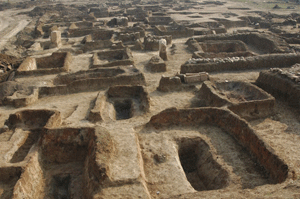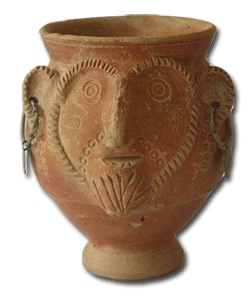Burial Customs - Archaeology Magazine
Death on the Roman Empire's eastern frontier

At one necropolis just outside the town of Scupi in Macedonia, archaeologists have thus far uncovered more than 5,000 graves dating from the Bronze Age through the Roman period. (Courtesy Lence Jovanova)
 Mass Grave Mystery
Mass Grave Mystery
In the first century A.D. Roman army veterans arrived in what is now northern Macedonia and settled near the small village of Scupi. The veterans had been given the land by the emperor Domitian as a reward for their service, as was customary. They soon began to enlarge the site, and around A.D. 85, the town was granted the status of a Roman colony and named Colonia Flavia Scupinorum. (“Flavia” refers to the Flavian Dynasty of which Domitian was a member.) Over the next several centuries Scupi grew at a rapid pace. In the late third century and well into the fourth, Scupi experienced a period of great prosperity. The colony became the area’s principal religious, cultural, economic, and administrative center and one of the locations from which, through military action and settlement, the Romans colonized the region.
Scupi, which gives its name to Skopje, the nearby capital of the Republic of Macedonia, has been excavated regularly since 1966. Since that time archaeologists have uncovered an impressive amount of evidence, including many of the buildings that characterize a Roman city— a theater, a basilica, public baths, a granary, and a sumptuous urban villa, as well as remains of the city walls and part of the gridded street plan. Recently, however, due to the threat from construction, they have focused their work on one of the city’s necropolises, situated on both sides of a 20-foot-wide state-of-the art ancient road. In the Roman world, it was common practice to locate necropolises on a town’s perimeter, along its main roads, entrances, and exits. Of Scupi’s four necropolises, the southeastern one, which covers about 75 acres and contains at least 5,000 graves spanning more than 1,500 years, is the best researched. The oldest of its burials date from the Late Bronze and Early Iron Age (1200–900 B.C). These earlier graves were almost completely destroyed as Roman burials began to replace them in the first century. According to Lence Jovanova of the City Museum of Skopje, who is in charge of the necropolis excavations, the burials have provided much new information crucial to understanding the lives of ancient Scupi’s residents, including the types of household items they used, their life spans, building techniques, and religious beliefs. In just the last two years alone, nearly 4,000 graves have been discovered and about 10,000 artifacts excavated, mostly objects used in daily life such as pots, lamps, and jewelry.

Among the many artifacts of everyday life found in the graves are a ceramic face pot dating to the first century A.D. (Courtesy Lence Jovanova)
Among the thousands of graves there is a great variety of size, shape, style, and inhumation practice. There are individual graves, family graves, elaborate stone tombs, and simple, unadorned graves. Some burials are organized in regular lines along a grid pattern parallel to the main road, as was common in the Roman world. Other individuals are buried in seemingly random locations within the necropolis area, more like a modern cemetery that has been in use for a long time. The oldest Roman layers, dating to the first through mid-third centuries A.D., contain predominantly cremation burials. The later Roman layers, however, containing graves from the third and fourth centuries A.D., are, with very few exceptions, burials of skeletons. According to Jovanova, this variety in burial practice is normal for this time and reflects a complex, long-term, and regionwide demographic change resulting not only from an increased number of settlers coming from the east, but also from internal economic, social, and religious changes.
This past summer, Jovanova’s team was finishing excavations in one section of the southeast necropolis, where she hopes to uncover more evidence about Scupi’s history and its inhabitants among the 5,000 to 10,000 graves she thinks are left to investigate. Although there are construction pressures on archaeological work in the necropolis, the ancient city is legally protected from any modern building, so future work will focus on excavating the city walls and buildings. There are also plans to create an archaeological park on the site.
Matthew Brunwasser is a freelance writer living in Istanbul.




































